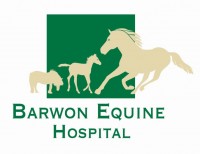What is strangles?
Strangles is a highly contagious infectious disease of the upper respiratory tract. It is caused by a bacterium called Streptococcus equi (S.equi) and affects horses, ponies and donkeys.
Spread
Infection occurs when susceptible horses come into contact with infected horses, either directly via close contact between horses or via indirect contact with contaminated feed and water buckets, tack, transport vehicles, stables, aerosols in the air as well as people’s hands and clothing. It is generally more common in younger horses whose clinical symptoms will be more severe; however horses of any age can become infected if they are not immune.
Clinical Signs/Symptoms
Classic signs of strangles include:
- rapid on-set of high temperature (39.5 to 40.5 degrees, typically 2-6 days after exposure);
- loss of appetite;
- discharge of yellow pus from the nose;
- symmetrically enlarged glands of the head and neck that often form abscesses;
- coughing; and
- difficulty swallowing.
When abscesses burst, thick yellow pus is discharged. However, sometimes discharge of mucus from the nostrils is all that is seen, and a carrier state without any obvious clinical signs is also possible.
Symptoms can last for days to months. Keep in mind affected horses may remain infectious for at least 4 weeks after they have recovered and appear healthy, hence for control purposes the horse should be isolated for this time.
Diagnosis
A diagnosis of Strangles is confirmed upon positive culture (e.g. growth of bacteria) in samples taken from nasal swabs or pus from abscesses.
A rapid screening test is available at the Centre for Equine Infectious Disease at the University of Melbourne.
Treatment
Immediate veterinary treatment should be sought in an attempt to control infection and treat the symptoms. Each case should be assessed and treated individually by your veterinarian.
The affected horse/s should be kept isolated for 6 to 8 weeks in order to prevent spread to other horses. Good biosecurity must be observed when handling infected horses, for example, handling the healthy horses before the sick horses.
Complications
While most horses recover routinely, the following complications may occur in up to 20% of affected horses.
Bastard Strangles –This is where bacteria occasionally spread through the body and cause abscesses in the lungs, liver, spleen, kidneys, brain, and lymph nodes. These cases can be fatal.
Purpura Haemorrhagica – This is where red spots form on skin and mucous membranes, it is caused by bleeding from smaller blood vessels. Also present is swelling of the limbs and head. It can be fatal.
Chronic Carrier Status – A small number of horses carry strangles in the guttural pouch (an out-pouching of the back of the throat) for months after they have recovered from the disease. Carrier horses appear healthy but can be a source of infection for other susceptible horses.
Disease prevention
All new horses should be monitored closely for three weeks after arrival, and ideally quarantined from other horses during that period. Any horse that develops a nasal discharge should be isolated and swabbed to exclude the possibility of strangles.
Horses kept in isolation from other horses are not at risk. Horses that go to studs, shows or camps, or those on agistment with other horses are at risk and a regular vaccination program for strangles is recommended.
If you are taking your horse out to competitions/training days or off your property for any reason, do not do so if they are showing any signs of illness e.g. coughing, increased temperature, snotty nose etc.
If you horse is healthy and you are taking it off your property, refrain from sharing floats if possible, yarding your horse where it may come into contact with other horses or contaminated materials such as gear, water buckets etc.
Vaccination
Vaccination for strangles does not always prevent disease in individual horses, but can assist control by reducing the severity and duration of clinical disease and the spread of disease in an outbreak. An initial course of 3 injections two weeks apart is necessary. Booster vaccinations are recommended every 6 months as the duration of immunity following vaccination is short.
If you are vaccinating your horse, be sure to check its temperature first, as horses should not be vaccinated when sick or actively infected.
